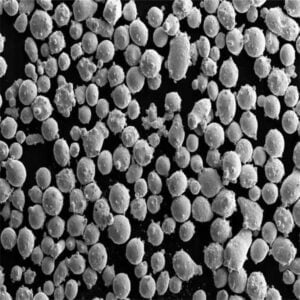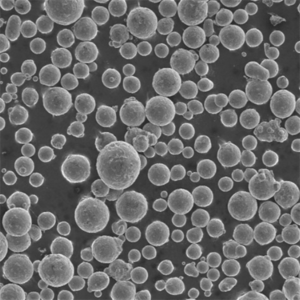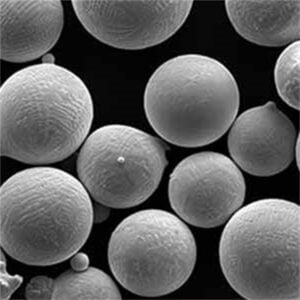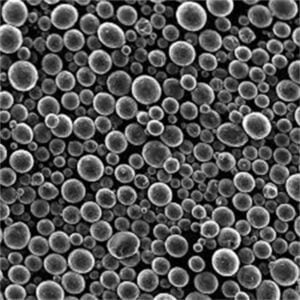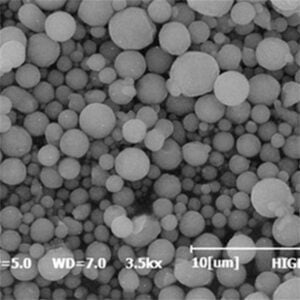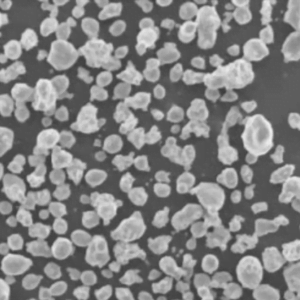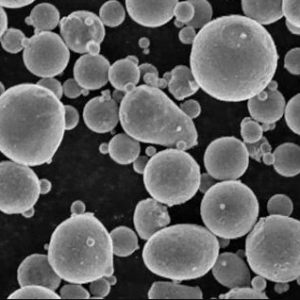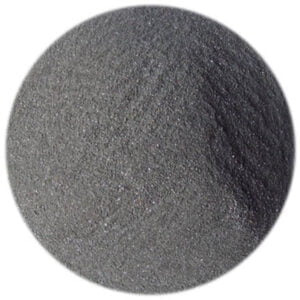Ağ Sistemi için FeSiCr tozu
İçindekiler
Sürekli gelişen ağ sistemleri dünyasında, güvenilir güç dağıtımının sağlanması çok önemlidir. Veri merkezleri, iletişim merkezleri ve kritik altyapıların tümü, işlevlerini yerine getirebilmek için kesintisiz elektrik akışına ihtiyaç duyar. İşte bu noktada demir (Fe), silikon (Si) ve kromdan (Cr) oluşan güçlü bir alaşım olan FeSiCr sahneye çıkıyor. Ancak tam olarak nedir FeSiCr tozuve bir ağ sisteminin gücüne ve dayanıklılığına nasıl katkıda bulunur?
FeSiCr'yi Anlamak: Bir Malzeme Güç Merkezi
FeSiCr tozu, demir, silikon ve kromun belirli oranlarda bir araya getirilmesiyle titizlikle hazırlanmış bir metal alaşımıdır. Bu güçlü karışım, tozun benzersiz bir dizi özelliğe sahip olmasını sağlayarak onu çeşitli uygulamalarda, özellikle de ağ sistemleri alanında çok aranan bir malzeme haline getirir.
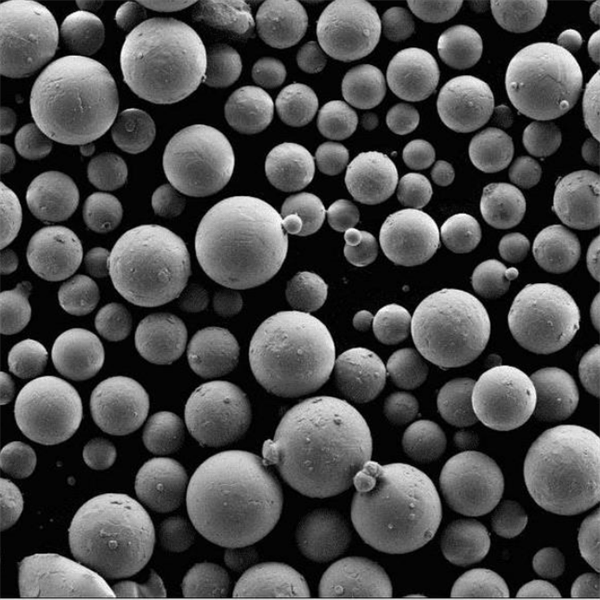
Bileşimi, Özellikleri ve Karakteristikleri FeSiCr Tozları
| Mülkiyet | Açıklama |
|---|---|
| Kompozisyon | FeSiCr tozu tipik olarak 70-80% demir, 1-5% silikon ve 15-20% kromdan oluşur. Bu yüzdelerdeki değişimler, tozun özelliklerini özel ihtiyaçlara göre uyarlayabilir. |
| Yüksek Mukavemet | FeSiCr etkileyici çekme ve akma dayanımına sahiptir, bu da deformasyon olmadan önemli mekanik strese dayanmasını sağlar. Bu da zorlu çalışma ortamlarına dayanabilen sağlam ağ bileşenleri anlamına gelir. |
| Mükemmel Oksidasyon Direnci | FeSiCr, yüksek sıcaklıklarda oksidasyona karşı üstün direnç gösterir. Bu özellik, bileşenlerin sıklıkla ısı ürettiği ve potansiyel olarak korozyona ve performans düşüşüne yol açtığı ağ sistemlerinde çok önemlidir. |
| Geliştirilmiş Aşınma Direnci | FeSiCr'deki krom varlığı, olağanüstü aşınma direncine katkıda bulunur. Bu, özellikle sürtünme ve harekete maruz kalan ağ bileşenleri için faydalıdır ve bileşen ömrünün uzamasını sağlar. |
| İyi Elektriksel İletkenlik | Birincil gücü olmasa da FeSiCr tozu, birçok ağ sistemi uygulaması için yeterli elektrik iletkenliği gösterir. |
| Manyetik Özellikler | Özel bileşime bağlı olarak, FeSiCr ferromanyetik veya paramanyetik davranış sergileyebilir. Bu özellik, belirli ağ bileşeni ihtiyaçları için uyarlanabilir. |
FeSiCr Tozunun Ağ Sistemlerindeki Uygulamaları
FeSiCr tozu, her biri benzersiz özelliklerinden yararlanan çok sayıda ağ sistemi bileşeninde kendine yer bulur. İşte öne çıkan bazı örnekler:
| Uygulama | FeSiCr Tozunun Faydaları |
|---|---|
| Baralar ve Konnektörler | FeSiCr'nin yüksek mukavemeti ve aşınma direnci, onu ağ sistemlerinde elektrik gücünü dağıtmak için çok önemli bileşenler olan baralar ve konektörler için ideal hale getirir. Bu parçalar, aşınma ve yıpranmaya yenik düşmeden önemli akımları kaldırabilme yeteneğine ihtiyaç duyar. |
| Isı Alıcıları ve Dağıtma Bileşenleri | Mükemmel oksidasyon direnci nedeniyle FeSiCr tozu, ısı alıcılarında ve dağıtma bileşenlerinde değerli olduğunu kanıtlamaktadır. Bunun nedeni, bu elemanların ağ ekipmanı tarafından üretilen ısıyı yönetmesi ve FeSiCr'in yüksek sıcaklıklara karşı direncinin bileşenin uzun ömürlü olmasını ve verimli ısı dağılımını sağlamasıdır. |
| EMI/RFI Koruması | FeSiCr tozunun manyetik özelliklerinden elektromanyetik parazit (EMI) ve radyo frekansı paraziti (RFI) koruması için yararlanılabilir. Bu, hassas ağ ekipmanlarını elektromanyetik kesintilerden koruyarak veri bütünlüğünü ve sistem işlevselliğini korur. |
| Katmanlı Üretim (AM) Uygulamaları | FeSiCr tozu, 3D baskı gibi eklemeli üretim (AM) teknikleri alanında parlıyor. Bu, karmaşık geometrilere sahip özelleştirilmiş ağ bileşenlerinin oluşturulmasına olanak tanıyarak daha fazla tasarım esnekliği sunar ve potansiyel olarak ağ sistemi performansını optimize eder. |
Teknik Özellikler, Boyutlar ve Sınıflar FeSiCr Tozları
FeSiCr tozları, çeşitli ağ sistemi gereksinimlerini karşılamak için çeşitli özelliklerde, boyutlarda ve derecelerde gelir. İşte dikkate alınması gereken bazı temel faktörlerin bir dökümü:
| Faktör | Açıklama |
|---|---|
| Parçacık Boyutu | FeSiCr toz partikül boyutu tipik olarak 10 ila 150 mikron arasında değişir ve malzeme akışkanlığını ve nihai bileşen özelliklerini etkiler. Daha ince tozlar daha iyi yüzey kalitesi sunar ancak özel işleme teknikleri gerektirebilir. |
| Akışkanlık | Tozun akışkanlığı, farklı AM veya metal enjeksiyon kalıplama (MIM) teknikleri için kullanım kolaylığını ve uygunluğunu belirler. Yüksek akışkanlık, sorunsuz işleme ve tutarlı bileşen yoğunluğu sağlar. |
| Görünür Yoğunluk | Bu parametre, birim hacim başına toz ağırlığını ifade eder. Üretim sürecinde malzeme kullanımını ve paketleme verimliliğini etkiler. |
| Notlar | Belirli uygulamalar için uyarlanmış hafif bileşimsel varyasyonlara sahip çeşitli FeSiCr toz kaliteleri mevcuttur. Örneğin, bazı kaliteler aşınma direncine öncelik verirken, diğerleri gelişmiş elektrik iletkenliğine odaklanabilir. |
Tedarikçiler ve Fiyatlandırma FeSiCr Tozları
Önde gelen birçok metal tozu tedarikçisi, çeşitli özelliklerde FeSiCr tozu sunmaktadır. İşte bazı önemli oyunculara bir bakış:
FeSiCr Tozlarının Fiyatlandırılması
Ne yazık ki, FeSiCr tozu için kesin bir maliyet belirlemek çeşitli faktörler nedeniyle zordur. İşte fiyatı etkileyenler:
- Toz Özellikleri: Partikül boyutu, akışkanlık ve kalite bir rol oynar. Üstün akışkanlığa ve belirli kalite özelliklerine sahip daha ince tozlar genellikle daha yüksek bir fiyata sahiptir.
- Sipariş Miktarı: Toplu alımlar genellikle ölçek ekonomisinden yararlanır ve daha küçük siparişlere kıyasla birim başına daha düşük maliyetlere yol açar.
- Piyasa Dalgalanmaları: Küresel metal fiyatları ve tedarik zinciri dinamikleri, hammadde maliyetini etkileyerek FeSiCr toz fiyatlandırmasını nihai olarak etkileyebilir.
Spesifik FeSiCr Metal Tozlarına Bir Bakış
Burada, öne çıkan on FeSiCr metal tozunun temel özelliklerini ve ağ sistemlerindeki potansiyel uygulamalarını vurgulayan bir dökümünü bulabilirsiniz:
| Metal Tozu | Açıklama | Ağ Sistemi Uygulamaları |
|---|---|---|
| AMPCOR 9740 (Höganäs AB) | Bu FeSiCr tozu, mükemmel aşınma direnci ve yüksek mukavemet ile dengeli bir bileşime (75% Fe, 4% Si, 21% Cr) sahiptir. | Olağanüstü mekanik dayanıklılık gerektiren baralar, konektörler ve diğer bileşenler için idealdir. |
| Höganäs AMPCOR 9741 (Höganäs AB) | Bu varyasyon, AMPCOR 9740'a kıyasla biraz daha yüksek krom içeriğine (73% Fe, 3% Si, 24% Cr) sahiptir ve aşınma direncini daha da artırır. | Özellikle kayar kontaklar ve hareketli parçalar gibi önemli sürtünme ve aşınma ile karşılaşılan uygulamalar için uygundur. |
| Carpenter Incus 316L (Marangoz Katkı Tozu Ürünleri) | Bu FeSiCr tozu 316L paslanmaz çeliğe benzer bir bileşim sunar (70% Fe, 1% Si, 19% Cr, Ni ve Mo ilaveleri ile). Mükemmel korozyon direncine ve biyouyumluluğa sahiptir. | Tam olarak ağ sistemine özgü olmasa da bu toz, potansiyel olarak zorlu ortamlara maruz kalan veya biyouyumluluk seviyesi gerektiren ağ bileşenleri için değerli olabilir. |
| AM BASF AMثير (AMBASF) (BASF) | BASF'nin bu FeSiCr tozu benzersiz bir isme sahiptir ("AMثير" Arapça'da "AM Gücü" anlamına gelir) ve iyi akışkanlığın yanı sıra yüksek mukavemete sahiptir. | İşleme kolaylığı ve güçlü mekanik özellikleri nedeniyle ağ sistemlerindeki AM uygulamaları için çok uygundur. |
| SLM Çözümleri FeSiCr15 (SLM Çözümleri) | SLM Solutions tarafından sunulan bu ürün, mukavemet ve elektrik iletkenliği arasında bir denge kurmaya öncelik vermektedir (75% Fe, 3% Si, 17% Cr, Mn ilaveli). | Hem yapısal bütünlük hem de yeterli elektrik performansı gerektiren ağ bileşenleri için potansiyel bir seçim. |
| LPW FeCrSi (LPW Teknoloji) | LPW Technology'nin FeCrSi tozu, iyi genel özelliklere sahip standart bir bileşim (75% Fe, 4% Si, 21% Cr) sunar. | Mukavemet, aşınma direnci ve oksidasyon direnci dengesinin istendiği çeşitli ağ sistemi uygulamaları için çok yönlü bir seçenek. |
| EOS M 290 (EOS GmbH) | EOS'un bu FeSiCr tozu, bazı rakiplerine kıyasla biraz daha düşük krom içeriğine (73% Fe, 3% Si, 19% Cr) sahiptir. Bununla birlikte, AM teknikleri için mükemmel işlenebilirlik sunar. | Yüksek hassasiyetli 3D baskı gerektiren ve üretim kolaylığına öncelik veren ağ sistemi bileşenleri için iyi bir seçim. |
| AMBIT FeSiCr (AMBIT Powder) | AMBIT Powder'ın bu FeSiCr tozu, çeşitli uygulamalar için iyi genel özelliklere sahip dengeli bir bileşime (73% Fe, 3.5% Si, 19.5% Cr) odaklanır. | İşlevsellik dengesi istenen çeşitli ağ sistemi bileşenleri için bir başka çok yönlü seçenek. |
| Proto Labs FeSiCr (Proto Labs) | Proto Labs, tipik bir bileşime (75% Fe, 4% Si, 21% Cr) sahip standart bir FeSiCr tozu sunmaktadır. | AM tekniklerini kullanarak ağ sistemi bileşenlerinin prototipini oluşturmak için hazır bir seçenek. |
| ExOne FeSiCr (ExOne) | ExOne'ın FeSiCr tozu, bağlayıcı püskürtme AM teknikleri için basılabilirliğe öncelik vermektedir. Spesifik bileşim detayları kolaylıkla elde edilememektedir. | Basılabilirliğe odaklandığı için bağlayıcı püskürtme AM ile üretilen ağ sistemi bileşenleri için potansiyel olarak iyi bir uyum. |
Ağ Sistemleri için FeSiCr Tozlarının Avantaj ve Dezavantajları
FeSiCr tozu, ağ sistemi uygulamaları için cazip bir teklif sunar, ancak bilinçli kararlar vermek için güçlü ve zayıf yönlerini anlamak çok önemlidir.
Avantajlar:
- Olağanüstü Mukavemet ve Aşınma Direnci: FeSiCr bu alanlarda mükemmeldir, bu da onu baralar ve konektörler gibi önemli elektrik akımlarını ve potansiyel aşınmayı idare eden bileşenler için ideal kılar.
- Üstün Oksidasyon Direnci: Ağ ekipmanı genellikle ısı üretir ve FeSiCr'nin yüksek sıcaklıklarda oksidasyona karşı direnci, ısı alıcılarında ve dağıtma bileşenlerinde bileşenin uzun ömürlü olmasını ve verimli ısı dağıtımı sağlar.
- Geliştirilmiş EMI/RFI Koruması: FeSiCr'nin manyetik özellikleri, hassas ağ ekipmanlarını yıkıcı elektromanyetik dalgalardan koruyarak etkili elektromanyetik ve radyo frekansı parazit koruması oluşturmak için kullanılabilir.
- Katmanlı Üretimde Çok Yönlülük: FeSiCr tozu, AM tekniklerinde parlayarak karmaşık geometrilere sahip karmaşık ağ bileşenlerinin oluşturulmasına olanak tanır. Bu, tasarım esnekliğini teşvik eder ve potansiyel olarak sistem performansını optimize eder.
- Geliştirilmiş Sürdürülebilirlik: Önemli ölçüde atık üreten geleneksel üretim süreçleriyle karşılaştırıldığında, FeSiCr tozu kullanan AM teknikleri daha sürdürülebilir bir yaklaşım sunarak malzeme israfını potansiyel olarak azaltabilir.
Dezavantajlar:
- Maliyet: FeSiCr tozu, ağ sistemlerinde kullanılan bazı geleneksel malzemelerden daha pahalı olabilir. Partikül boyutu, akışkanlık ve kalite gibi faktörlerin tümü fiyatı etkiler.
- Sınırlı Kullanılabilirlik: Büyük tedarikçilerden kolayca temin edilebilse de FeSiCr tozu, yaygın olarak kullanılan bazı ağ sistemi malzemeleri kadar geniş çapta erişilebilir olmayabilir.
- İşleme ile İlgili Hususlar: FeSiCr tozu kullanan AM teknikleri, geleneksel üretim yöntemlerine kıyasla özel ekipman ve uzmanlık gerektirebilir.
Doğru Seçimi Yapmak FeSiCr Tozu Ağ Sistemi İhtiyaçlarınız için
En uygun FeSiCr tozunun seçilmesi, ağ sistemi gereksinimlerinize özgü çeşitli faktörlere bağlıdır:
- Bileşen İşlevselliği: Bileşenin birincil işlevini göz önünde bulundurun. Dayanıklılık, aşınma direnci, elektrik iletkenliği veya bunların bir kombinasyonu öncelikli mi?
- Üretim Tekniği: AM tekniklerini mi yoksa geleneksel yöntemleri mi kullanacaksınız? Farklı FeSiCr tozları belirli AM süreçlerine uygundur.
- Maliyet Değerlendirmeleri: Tozun maliyetini, performans faydaları ve genel proje bütçesi ile dengeleyin.
- Tasarım Karmaşıklığı: Ağ bileşeniniz karmaşık geometriler gerektiriyorsa, FeSiCr tozu ile AM mükemmel bir uyum olabilir.
Nitelikli bir metal tozu tedarikçisine ve bir ağ sistemi mühendisine danışılması şiddetle tavsiye edilir. Seçim sürecinde size rehberlik ederek en uygun ürünü seçmenizi sağlayabilirler. FeSiCr tozu özel uygulamanız için.
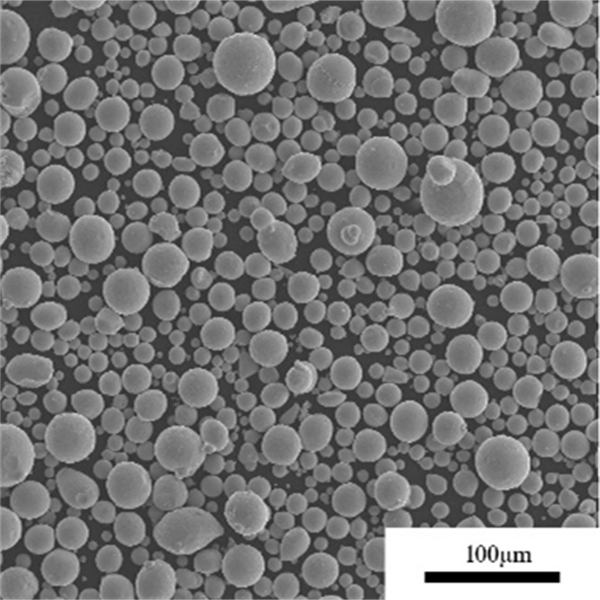
SSS
S: FeSiCr tozunun kullanımı güvenli midir?
C: Genel olarak güvenli olmakla birlikte, metal tozları için uygun taşıma prosedürleri önerilir. Bu, tozu toplu halde tutarken eldiven, koruyucu gözlük ve solunum cihazı gibi uygun kişisel koruyucu ekipman (KKE) giymeyi içerir.
S: FeSiCr tozu geri dönüştürülebilir mi?
C: Evet, özel bileşime ve herhangi bir kirleticiye bağlı olarak. Bazı AM teknikleri, basılmamış FeSiCr tozunun geri dönüşümüne izin vererek potansiyel olarak atıkları azaltır ve sürdürülebilirliği teşvik eder.
S: FeSiCr tozu ağ sistemlerinde kullanılan diğer malzemelerle nasıl karşılaştırılır?
C: Bakır gibi geleneksel malzemeler üstün elektrik iletkenliği sunar, ancak FeSiCr mukavemet, aşınma direnci ve oksidasyon direncinde üstündür. Alüminyum hafif özellikler sunar, ancak FeSiCr daha yüksek mekanik mukavemete sahiptir. Seçim nihayetinde ağ bileşeninin özel ihtiyaçlarına bağlıdır.
S: Ağ sistemlerinde FeSiCr tozu için gelecekteki görünüm nedir?
C: Ağ sistemleri giderek daha karmaşık hale geldikçe ve gelişmiş güvenilirlik gerektirdikçe, FeSiCr tozu daha belirgin bir rol oynamaya hazırlanıyor. AM teknolojisindeki gelişmeler ve FeSiCr tozunun potansiyel maliyet düşüşü, gelecekteki ağ altyapısı için değerli bir malzeme olarak konumunu daha da sağlamlaştırabilir.
Paylaş
MET3DP Technology Co, LTD, merkezi Qingdao, Çin'de bulunan lider bir katmanlı üretim çözümleri sağlayıcısıdır. Şirketimiz, endüstriyel uygulamalar için 3D baskı ekipmanları ve yüksek performanslı metal tozları konusunda uzmanlaşmıştır.
İşletmeniz için en iyi fiyatı ve özelleştirilmiş Çözümü almak için sorgulayın!
İlgili Makaleler

Yüksek Performanslı Nozul Kanat Segmentleri: Metal 3D Baskı ile Türbin Verimliliğinde Devrim
Daha Fazla Oku "Met3DP Hakkında
Son Güncelleme
Bizim Ürünümüz
BİZE ULAŞIN
Herhangi bir sorunuz var mı? Bize şimdi mesaj gönderin! Mesajınızı aldıktan sonra tüm ekibimizle talebinize hizmet edeceğiz.

3D Baskı ve Katmanlı Üretim için Metal Tozları
ÜRÜN
cONTACT BİLGİLERİ
- Qingdao Şehri, Shandong, Çin
- [email protected]
- [email protected]
- +86 19116340731






